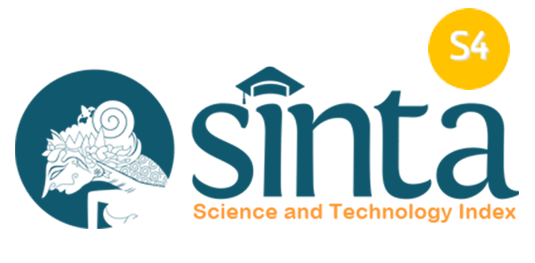EVOLUSI TEORI FRAUD DAN RELEVANSINYA TERHADAP STRATEGI PENCEGAHAN KORUPSI DANA DESA
DOI:
https://doi.org/10.32815/ristansi.v5i1.2266Keywords:
Teori Fraud, Korupsi, Dana DesaAbstract
The purpose of this research is to review the evolution of fraud theory and to describe the relationship between the evolution of fraud theory and the formulation and implementation of strategies for preventing village fund corruption. This study uses a qualitative research method with a literature review approach from various references related to the topic being studied. The evolution of fraud theory began with the discovery of the concept of white-collar crime. From this concept, fraud theory first emerged in 1953 and has continued to develop over time until 2021. The fraud theories that have been discovered can be used by the District/City Inspectorate to formulate and implement strategies for preventing village fund corruption so that the strategies applied can be more effective in preventing village fund corruption.
References
Almawadi, I. (2022). Paling Banyak Digunakan Koruptor, Modus Penyalahgunaan Anggaran Dominasi 252 Kasus Korupsi pada Semester I. voi.id.
Apriliano, B. (2022). KPK Sebut Korupsi Dana Desa Masuk 3 Kasus Terbanyak dalam Korupsi Pengelolaan Keuangan. Kompas.Com. Retrieved from https://regional.kompas.com/read/2022/09/28/230628878/kpk-sebut-korupsi-dana-desa-masuk-3-kasus-terbanyak-dalam-korupsi
Asosiasi Auditor Intern. (2014). STANDAR AUDIT INTERN PEMERINTAH INDONESIA. Jakarta: AAIPI.
Association of Certified Fraud Examiners (ACFE). (2022). Occupational fraud 2022: a report to the nations. Association of Certified Fraud Examiners, 1–96.
Association of Certified Fraud Examiners Indonesia. (2019). Survei Fraud Indonesia 2019. Indonesia Chapter #111, 53(9), 1–76. Retrieved from https://acfe-indonesia.or.id/survei-fraud-indonesia/
Dorminey, J., Scott Fleming, A., Kranacher, M. J., & Riley, R. A. (2012). The evolution of fraud theory. Issues in Accounting Education, 27(2), 555–579. https://doi.org/10.2308/iace-50131
Hennink, M., Hutter, I., & Bailey, A. (2020). Qualitative Research Methods. London: SAGE Publications Ltd.
Herlinda, D., Nielwaty, E., & Marlinda, P. (2021). Pengawasan Inspektorat Dalam Penggunaan Dana Desa Di Kampung Tanjung Kuras Kecamatan Sungai Apit Kabupaten Siak. Jurnal JAPS, 2, 135–143. https://doi.org/10.46730/japs.v
Maria, E., & Halim, A. (2020). Dana Desa, Korupsi, dan Good Public Governance. Ekonomi Keuangan Dan Kemandirian Desa Di Tengah Pandemi.
Marks, J. (2012). The Mind Behind the Fraudsters Crime: Key Behavioral and Environmental Elements. United States of America: Crowe Horwath LLP, 1–62. Retrieved from https://www.crowe.com/
Ni’am, S. (2022). Firli Bahuri Prihatin Sudah 686 Kepala Desa dan Perangkatnya Terjerat Korupsi. KOMPAS.Com. Retrieved from https://amp.kompas.com/nasional/read/2022/10/18/17543511/firli-bahuri-prihatin-sudah-686-kepala-desa-dan-perangkatnya-terjerat
Nugraha, Q. (2016). Modul 1 Manajemen Strategis. Manajemen Strategis Pemerintahan. Jakarta: Universitas Terbuka. Retrieved from http://repository.ut.ac.id/4213/1/IPEM4218-M1.pdf
Nurfadillah, Y., Mustika, R., & Yentifa, A. (2022). Peran Audit Internal dalam Pencegahan Fraud pada Sektor Pemerintahan (Studi Kasus pada Inspektorat Daerah Provinsi Sumatera Barat). Jurnal Akuntansi, Bisnis Dan Ekonomi Indonesia (JABEI), 1(2), 18–22. https://doi.org/10.30630/jabei.v1i2.24
Oekan S, A. (2016). Pembangunan Berkelanjutan di Indonesia. Jakarta: Gramedia Pustaka Utama.
Peraturan BPK Nomor 1. (2017). Peraturan BPK Nomor 1 Tahun 2017 tentang Standar Pemeriksaan Keuangan Negara. Jakarta, 1–85.
Peraturan Pemerintah Republik Indonesia. (2019). Peraturan Pemerintah Republik Indonesia Nomor 72 Tahun 2019 Tentang Perubahan Atas Peraturan Pemerintah Nomor 18 Tahun 2016 Tentang Perangkat Daerah. Lembaran Negara RI, (005290), 1–42. Retrieved from https://peraturan.bpk.go.id/Details/122033/pp-no-72-tahun-2019
Poima, A. C., & Nugraheshty Hapsari, A. (2020). Strategi Anti Fraud dalam Pengelolaan Dana Desa. International Journal of Social Science and Business, 4(1), 18–24. https://doi.org/10.23887/ijssb.v4i1.21176
Puspasari, N. (2015). Fraud Theory Evolution and Its Relevance To Fraud Prevention in the Village Government in Indonesia*. Asia Pacific Fraud Journal, 1(2), 177. https://doi.org/10.21532/apfj.001.16.01.02.15
Ramamoorti, S., Morrison, D., & Koletar, J. W. (2009). Bringing Freud to fraud: Understanding the State-of-Mind of the C-Level suite/white collar offender through “A-B-C” analysis. Institute for Fraud Prevention (IFP) at West Virginia University, 1–35.
Rufus, R. J., Miller, L. S., & Hahn, W. (2015). Forensic accounting. England: Pearson Education Limited.
Salameh, R., Al-Weshah, G., Al-nsour, M., & Al-Hiyari, A. (2011). Alternative Internal Audit Structures and Perceived Effectiveness of Internal Audit in Fraud Prevention : Canadian Social Science, 7(3), 40–50. https://doi.org/10.3968/j.css.1923669720110703.007
Saluja, S., Aggarwal, A., & Mittal, A. (2021). Understanding the fraud theories and advancing with integrity model. Journal of Financial Crime, 29(4), 1318–1328. https://doi.org/10.1108/JFC-07-2021-0163
Sudarmo, Sawardi, T., & Yulianto, A. (2009). Fraud auditing 2008.
Tongat. (2022). Preventive Measures As Strategic Attempts to Cope with Criminal Acts of Corruption in Indonesia. KnE Social Sciences, 2022, 232–249. https://doi.org/10.18502/kss.v7i15.12093
Vousinas, G. L. (2019). Advancing theory of fraud: the S.C.O.R.E. model. Journal of Financial Crime, 26(1), 372–381. https://doi.org/10.1108/JFC-12-2017-0128
Yuwono, T. P. (2022). Membedah Potensi dan Tantangan Dana Desa Tahun 2022. Www.Djpb.Kemenkeu.Go.Id. Retrieved from www.djpb.kemenkeu.go.id














